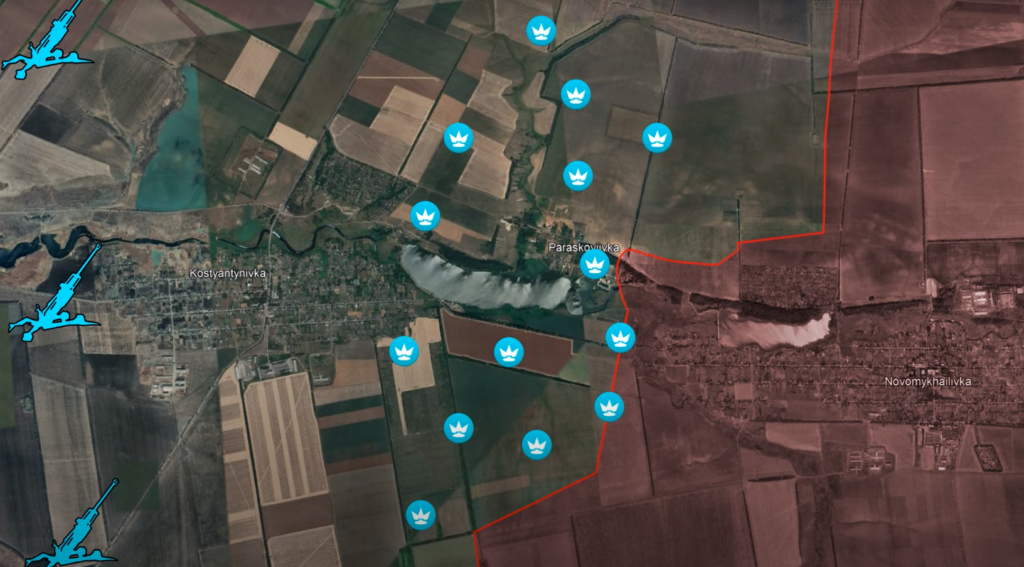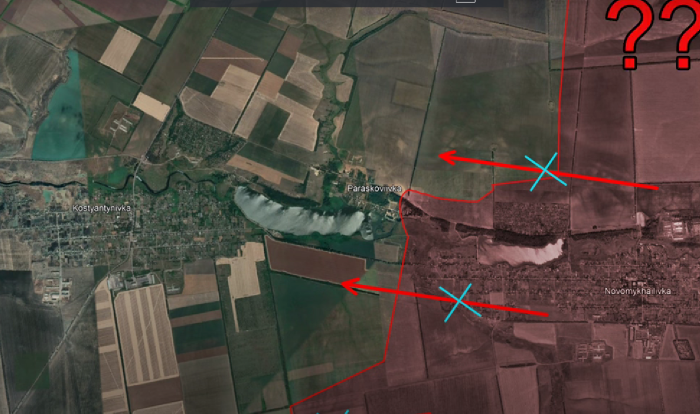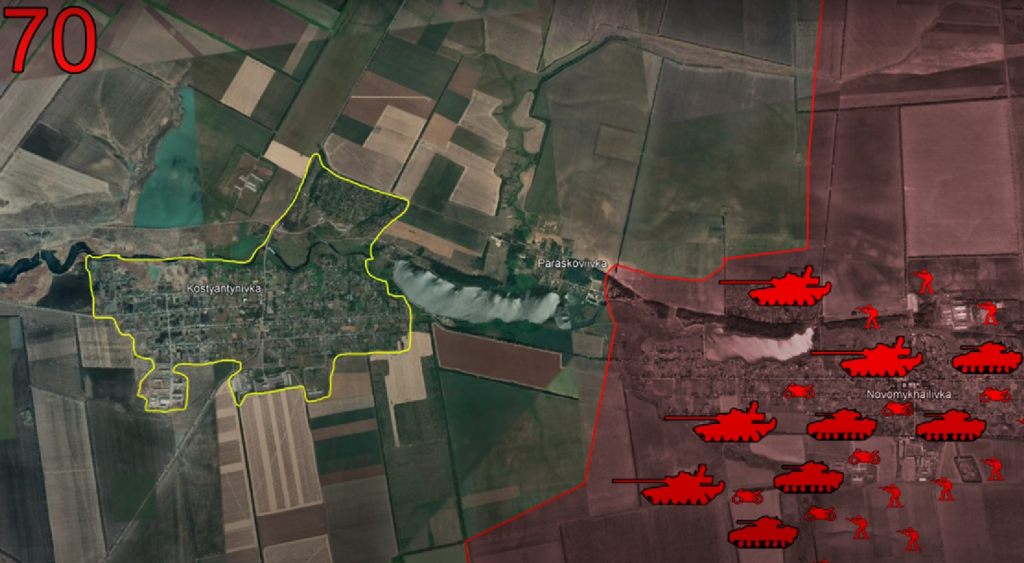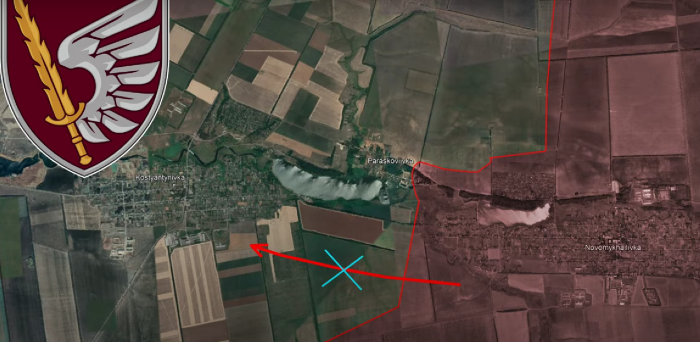Frontline report: Elite Ukrainian brigade repels massive Russian armored assault
A reinforced Russian battalion seized group of nearly 70 vehicles, including 11 tanks and 46 armored fighting vehicles, was repelled by Ukrainian forces near Kostyantynivka.


Day 888: 29 July
On 29 July, there is a lot of news from the Kurakhova direction.

After Russian forces had conducted a series of successful attempts to find a weak spot in and around Kostyantynivka, the Russian commanders had to adjust their approach. This led to a change in their tactic, and they prepared for one of the largest Russian mechanized assaults since the beginning of the war. The probing attacks observed over the past month aim to assess the strength of the Ukrainian response, identify the types of munitions used, and, most crucially, measure the time between detection and response. Since all previous assault units were swiftly and decisively neutralized, Russian commanders concluded only a significantly larger strike force could ensure at least some troops would reach Kostyantynivka.

Consequently, they began assembling a reinforced battalion seizing group consisting of almost 70 vehicles, namely 11 tanks, 46 armored fighting vehicles, 12 motorcycles, and 200 soldiers. Interestingly, the Russians even included one of their rare vehicles, the BMPT Terminator, which is designed to be a tank support fighting vehicle. reportedly, only 23 units of it had been manufactured as of December 2023.
The size and diversity of this assault group underscore the operation’s significance for the Russians and their willingness to invest heavily to secure a foothold in Kostyantynivka and use it as a launch pad for further advances. The Russian assault group was divided into several subgroups, each led by a tank, followed by several armored fighting vehicles carrying troops and then motorcycles.
These subgroups attacked simultaneously, overwhelming the Ukrainian Defenders by sheer numbers and thereby splitting their efforts. The goal was to penetrate Kostyantynivka from the south and establish positions there. As you may recall, the defense of this part of the front line is entrusted to the 79th Air Assault Brigade, one of the most well-prepared and well-equipped elite Ukrainian forces. Drone operators from the brigade maintain rigorous day and night surveillance of the zero line and monitor the Russian rear to anticipate enemy movements and respond proactively.
They detected this large armored column from a distance and raised the alarm across all responsible Ukrainian units in the area. The first line of defense against such armored assaults involves the creation of extensive mind fields, and Ukrainian snipers in the region have already demonstrated the thoroughness of their work. However, given the size of the enemy forces, it was evident that relying solely on minefields would be insufficient to hold the Russian offensive. Recognizing the potential for a critical situation, the Ukrainians deployed all available weapons. Geolocated footage published by the Brigade shows artillery and Kamakazi drones targeting various enemy vehicles on the outskirts of the village. These images not only reveal the sophisticated tactics of the Russians but also highlight the variability in their assault groups.
While all follow a similar pattern, their sizes differ, with some groups comprising up to 10 vehicles and others consisting of three to five. The footage underscores the adaptability and readiness of the Ukrainian forces encountering such diverse and large-scale assaults. At the same time, the video exemplifies the Ukrainian multi-layered approach roach, consistently aiming to target the lead vehicle of each column.
The goal was to destroy it to deter the rest of the column from advancing or to immobilize them, making them easier targets for the artillery and drone crews. Various images depict the devastating effectiveness of these tactics and the crucial role of pre-lay minefields, as evidenced by several powerful explosions of Russian armored fighting vehicles. This strategic combination led to significant success, with the 79th AA sold Brigade confirming they had successfully repelled the Russian attack.

They inflicted substantial damage by taking out the lead vehicles in each subgroup. Six out of 11 tanks were destroyed, 10 out of 46 armored fighting vehicles were taken out, all 12 motorcycles were obliterated, and of the 200 Russian troops, 40 were killed, and 37 were injured. This clever defense tactic showcased the effectiveness and preparedness of the Ukrainian defenders in the region. All uncensored footage from this Russian attack can be found on our telegram channel, linked in the description. Such deadly attacks without success in various areas of the front line have led the Institute for the Study of War to conclude that the Russian military command’s willingness to expand a large number of armored vehicles on limited tactical objectives reflects poor longer-term operational foresight and constraints on Russian equipment in the medium to long term will make such failed mechanized assaults costly with time.
The Russian military has extensively relied on refurbishing stocks of Soviet Arab weapons and military equipment, particularly armored vehicles, to sustain the tempo of its offensive operations in Ukraine. Given the current trend, the Russian defense industry can’t produce enough vehicles to catch up with the high level of equipment losses, even with further economic mobilization that can be expected to be forced by the Kremlin. Overall, Russians have still not found anything better than throwing more bodies and armor in frontal assault in their attempts to overcome the Ukrainian defense southwest of Donetsk.
Even the biggest armored assault group we have seen in Donbas for the past 12 months was efficiently stopped by the highly effective Ukrainian elite units responsible for protecting the region. Such successful operations gave them more time to prepare even better defensive positions. They dealt a huge blow to Russian offensive capabilities and wartime economics in the medium to long term. This can only help Ukrainians create better conditions for themselves on the battlefield.
In our daily frontline report, we pair up with the military blogger Reporting from Ukraine to keep you informed about what is happening on the battlefield in the Russo-Ukrainian war.
Read also:
- Frontline report: Russian military bridgehead collapses in Vovchansk
You could close this page. Or you could join our community and help us produce more materials like this.
We keep our reporting open and accessible to everyone because we believe in the power of free information. This is why our small, cost-effective team depends on the support of readers like you to bring deliver timely news, quality analysis, and on-the-ground reports about Russia's war against Ukraine and Ukraine's struggle to build a democratic society.
A little bit goes a long way: for as little as the cost of one cup of coffee a month, you can help build bridges between Ukraine and the rest of the world, plus become a co-creator and vote for topics we should cover next. Become a patron or see other ways to support.



